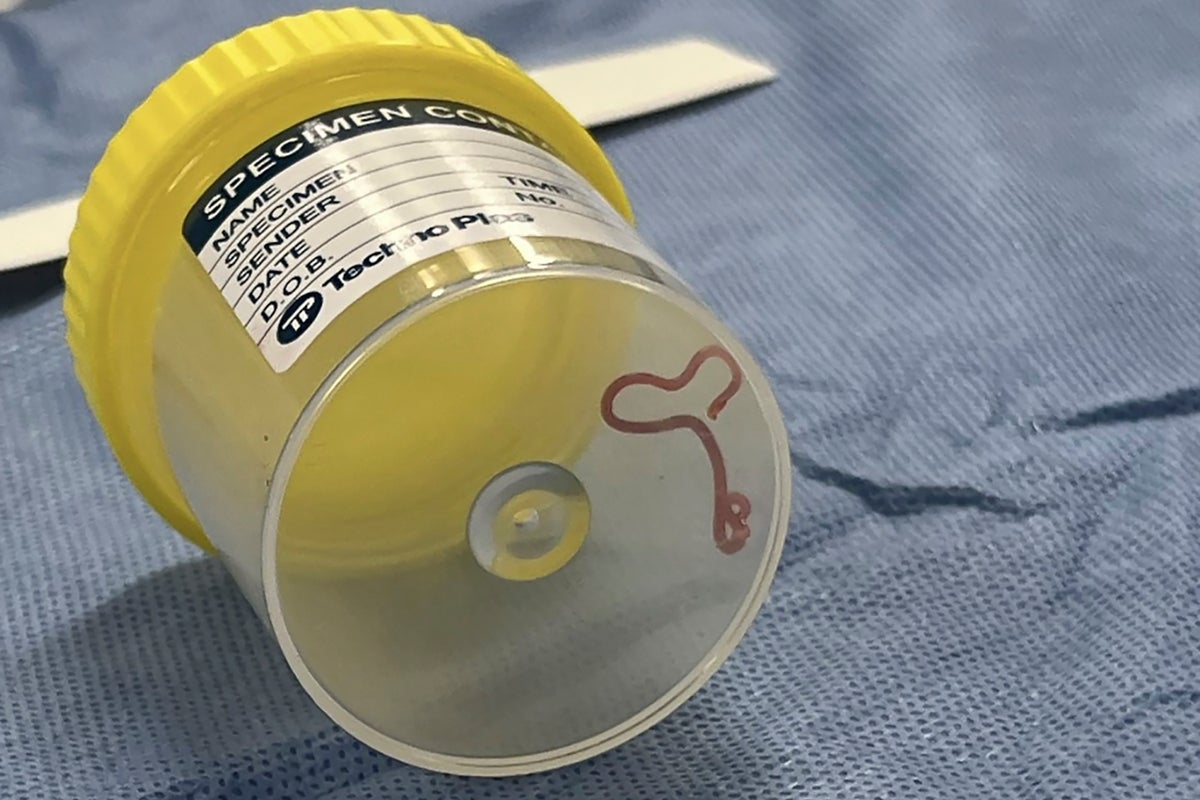
A doctor has unveiled the moment she found a “wiggly” worm inside a patient’s head in an “unprecedented” case in worldwide medical history.
The 64-year-old woman, living in New South Wales, Australia but originally from the UK, had been experiencing abdominal pain and diarrhoea, a cough and night sweats for three weeks before she was admitted to hospital in January 2021.
An MRI scan eventually detected a parasitic roundworm inside the patient’s brain— (AP)
However, her condition was initially diagnosed as pneumonia. Treated with steroids, she was readmitted a few weeks later with a fever and a persistent cough, but by 2022, her symptoms had worsened to include forgetfulness and depression.
As a result, she was referred to specialists in Canberra – where an MRI scan eventually detected a parasitic roundworm inside her brain.
Nestled inside the right frontal lobe lesion, the creature measured 8cm lengthwise and 1mm across, necessitating surgical intervention for its removal.
"[It was] surprising for us and not what we’re used to at all when we do such planned surgery... but [it was] an answer to this woman who had been suffering for so long”, neurosurgeon Dr Hari Priya Bandi told SkyNews of the discovery, which she described as “different to textbooks of parasites in the brain.”
After the “wiggly” worm’s removal, it was inspected by both an infectious diseases specialist and a veterinary scientist, who likened its redness to a nematode or roundworm. It was then taken to the Commonwealth Scientific and Industrial Research Organisation (CSIRO), where three days later it was “still wiggling quite happily.”
The worm typically lives inside the digestive system of carpet pythons found in New South Wales— (HANDOUT/THE AUSTRALIAN NATIONAL UNIVERSITY/AFP via Getty Images)
However, the worm was then “sliced for genetic typing.” Documented in the Journal of Emerging Infectious Diseases, it was identified by specialists as a third-stage larva of the Ophidascaris robertsi nematode species, a creature that typically lives inside the digestive system of carpet pythons found in New South Wales.
Though the hypothesis cannot be confirmed, specialists suspect that she accidentally ingested the worm’s eggs after eating edible grasses contaminated with snake faeces.
The professionals noted that the larvae began travelling to her brain after the eggs hatched inside her body, which could have been facilitated by her medication.
Six months after the surgery, however, the woman was still experiencing an element of forgetfulness and depression – though these had shown signs of improvement. Medical experts then drew attention to similar studies on rats, which have shown that a worm’s eggs can live inside the body for over four years.







